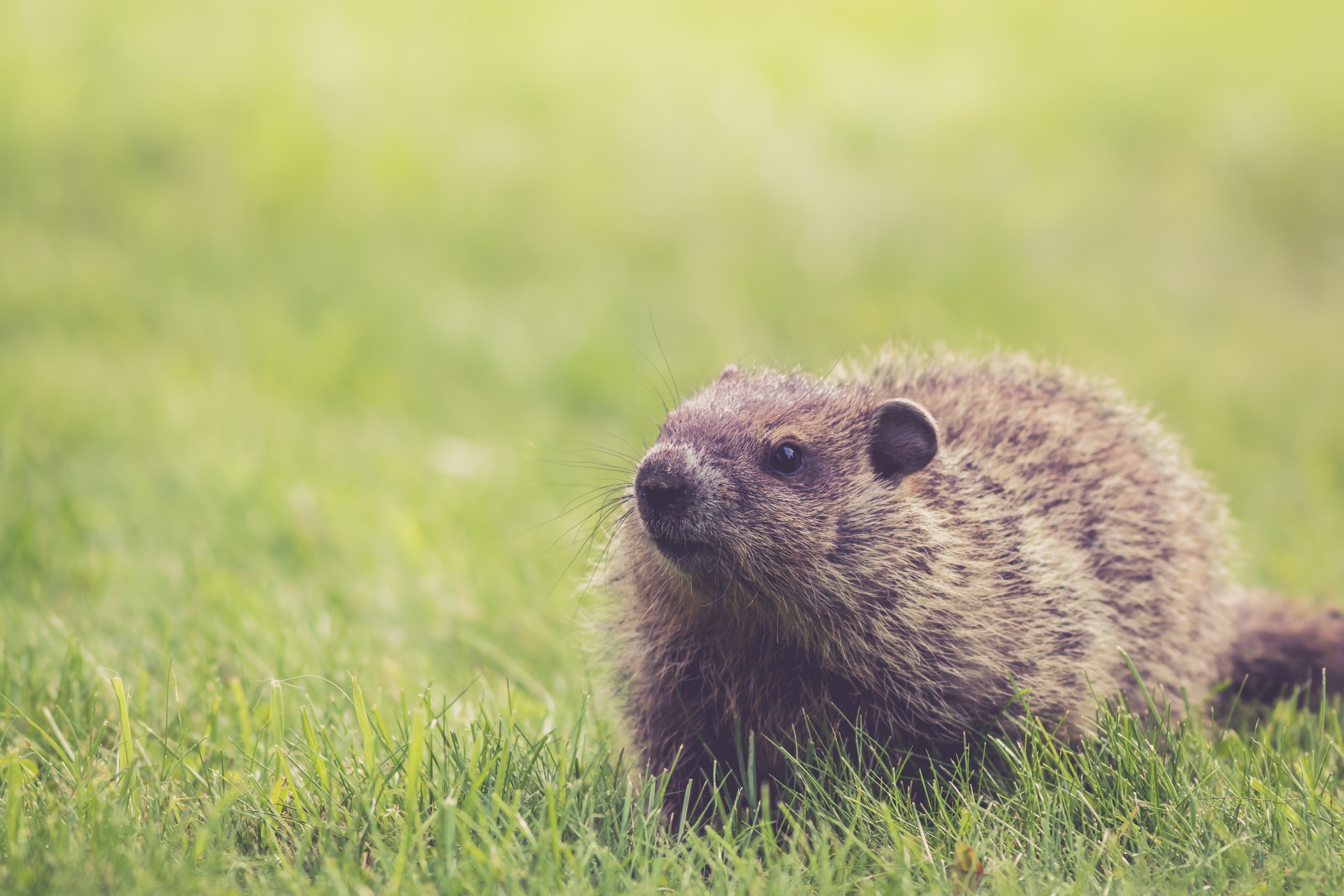Woodchucks, or groundhogs as they are more commonly known, are the largest members of the squirrel family. They can be distinguished by their heavy-set, low-slung bodies, relatively short but bushy tail, and short, powerful legs. They are one of few mammals that truly hibernates and groundhogs are bigger in size at the beginning of hibernation due to a buildup of food stores, but how big is a groundhog really?

It is thought that groundhog activity marks a change in seasons, and has resulted in the American holiday known as Groundhog Day is observed on February 2 of each year. At this annual celebration, a groundhog is the most honored guest, and the attention is focused on its ability to predict the end of winter. A groundhog will retreat to their underground burrow to hibernate at the first sign of winter (usually the first frost), and this hibernation period can last up to 6 months, depending on regional distribution. During this time, the groundhog survives on its stores of body fat that have been building up throughout the year. If you can imagine, the groundhog wakes up hungry and ready to feast. Much of its warm-weather activity is spent feeding, mating, raising young and gaining enough weight to survive the winter.
Whether you’ve only seen groundhogs on television or you’ve spotted one in your yard, you may be wondering, “How big do groundhogs get?” Read below to learn all about the average groundhog size.
How Big is a Groundhog?
The average groundhog size is 5 to 10 pounds and 16 to 20 inches long.. The tail is usually 4 to 7 inches long. The entire body and tail are covered with fur. Males and females groundhogs look similar, but the males may be slightly larger in size. Groundhogs have dense, stout bodies with short legs. Their long, curved claws are perfect for digging their underground burrows. Like the rest of the rodent family, groundhogs have long incisor teeth. Typically, groundhogs are a grey-brown color, but albino and all-black species also exist. They spend most of their time underground in their burrows but will come out to forage for food during short periods in the early morning and early evening. Take a look at some of the photos below for a closer look at groundhogs.
The Groundhog Lifespan
Groundhogs live approximately 3 years in the wild. This is due, in part, to the many predators they have, including coyotes, foxes, bobcats, weasels, dogs, owls and hawks. These animals typically target young groundhogs, while larger predators may prey on adult groundhogs.
Potential Groundhog Property Damage
Most people don’t consider groundhogs to be the ideal tenant in their yard. Their digging and feeding habits can easily destroy your garden and leave holes and ground instability throughout your yard. Since groundhogs eat to prepare for winter, any grass and other readily available plants may be a source of food for these animals. In addition, groundhogs are territorial and will defend their homes if threatened. If your pets are poking around in groundhog burrows, they may encounter an aggravated groundhog that could attack.
Damage control in the way of exclusion may be difficult when it comes to groundhogs. They are good climbers and diggers, so fencing them out may not always be effective. If you are considering installing an exclusion fence, it should be at least 10 to 12 inches in the ground and at least 4 feet tall to help prevent groundhogs from digging under or crawling over the fence.
If an unwanted groundhog has already managed to establish itself in your yard, you may require the assistance of a wildlife technician.



